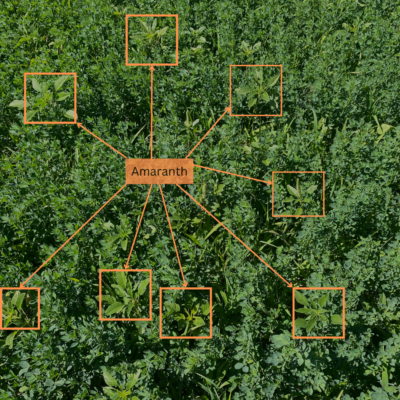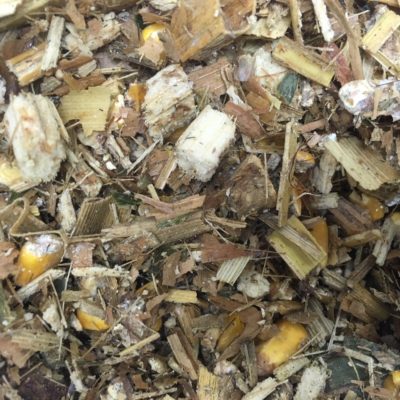Over the past year, when I receive phone calls from equine enthusiasts, they all seem to have the same question. What do I need to analyze my hay for a horse that has been diagnosed with Equine Metabolic Syndrome, Cushing’s Disease, Equine Diabetes or is prone to Laminitis?
While the pathology and causes of each of these disorders may be very different, they all can be managed through diet. Each of these conditions requires the horse to consume a low, simple carbohydrate diet. This means feeding no cereal grains, which are high in starches, but instead feeding a high fiber, forage based diet. I typically recommend that these clients run an NIR plus TSI plus Starch. When choosing a hay or analyzing pasture grass for suitability to feed horses with metabolic conditions, there are 7 key concepts to examine.
1. Protein
When determining a forage to feed, it is important to realize that without grain supplementation, it will be important to meet the horses protein requirements. Most horses at maintenance require 10% crude protein on a dry basis. Growing, breeding, and working or performing horses have increased protein requirements depending on their physiological state and physical activity level.
2. Acid Detergent Fiber (ADF)
The ADF is an indicator of the digestible energy available in a feed. Most horses at maintenance require between 37-40% ADF on a dry basis. Higher fiber percentages in a forage indicates that there is more structural carbohydrates in the feed and therefore less water soluble carbohydrates such as sugars and starches, which should be avoided when managing a metabolic condition.
3. Neutral Detergent Fiber (NDF)
Similar to ADF, increased NDF also indicates that more carbohydrates have been converted from water soluble carbohydrates to structural carbohydrates, therefore forages with higher NDF tend to be better for managing a horse with a metabolic syndrome. Most horses at maintenance require between 50-65% NDF on a dry basis. The NDF is an indicator of dry matter intake and palatability, as NDF increases the horse will consume less of that feed, so avoid a hay with an NDF much higher than 65%.
4. Relative Feed Value (RFV)
The RFV is a calculated index based on the ADF and NDF. A good hay to maintain a horses condition would have a RFV between 83-112. Typically, grass hays and grass forages are going to meet the RFV recommendations for horses with metabolic conditions as opposed to commonly fed legumes such as alfalfa hay.
5. Non- Structural Carbohydrates (NSC)
The NSC are carbohydrates that do not make up the structural, fibrous portions of the plant. They are measured and include water soluble carbohydrates (glucose, fructose, and other sugars) and starches. It is recommended that the NSC be below 10% in horses with Equine Metabolic Syndrome, Diabetes, or Cushing’s Disease. Throughout the daylight hours, plants accumulate NSC and at night, those accumulated NSC are converted to cellulose and other fibers, making the NSC content of pasture grass cyclic. Therefore, when allowing horses with a metabolic condition to graze pasture, it is best to turn them out on to pasture in the early morning when sugars are low in the pasture grass and never allow grazing in the evening when sugars are high in the grass. If you are producing hay to be consumed by horses with the aforementioned conditions, hay should be cut in the early morning hours to obtain the least amount of NSC possible. Furthermore, if your cut hay were to get rained on, the sugars or water soluble carbohydrates would be removed from the hay, resulting in lower NSC content and increased fiber percentage, making that hay ideal for horses with metabolic syndromes. Be sure to bale hay that has been rained on after the hay has had a chance to dry to avoid any potential mold or heat damage issues.
6. Total Sugars Invert (TSI)
At Ward Laboratories, Inc. we do not measure water soluble carbohydrates, however we can measure the amount of glucose and fructose in a feed as TSI.
7. Starch
Starch is an indicator of feed energy. Unfortunately, when consumed, feed is broken down into glucose units which contribute to metabolic related issues. Starch, in addition to water soluble carbohydrates or in our lab TSI, is the measurement of NSC. To reiterate the very important recommendation from above; TSI + Starch should be less than 10% in a forage or hay to be used to manage a horse’s metabolic condition through the diet.
In conclusion, when feeding a horse with a metabolic condition, avoid grain as it is high in starch and choose a low quality grass hay that is at or above 10% crude protein on a dry basis. Keep the non-structural carbohydrates to less than 10% of the hay or forage you are feeding. Following these guidelines should prevent bouts of laminitis and keep the metabolic condition in check.
0
You have 0 items in your cart





[…] horses need twice as much energy as their sedentary counterparts. Every horse will consume 2.0-3.0% of their total body weight. Getting enough energy into the total […]